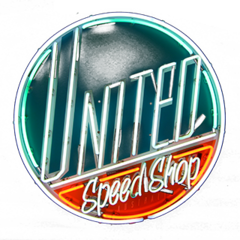Over the next few week’s we’ll walk you through different fundamental tenants of a well-designed front-suspension unit, looking at crucial concepts like Ackerman angle, anti-dive, scrub radius, camber/caster/toe, and bump steer (which is where we’ll kick off this week).
WEAVIN’ WHEELS
Have you ever driven a modified car down a road and had it seemingly follow random bumps in the road, pulling left or right as it strikes them? That, kids, is bump steer. To put it a bit more technically bump steer is the angle of steering deflection through the suspension’s arc, IE; the wheel turning left or right on its own when the suspension compresses and rebounds.
Bump steer is caused by an incorrect relationship between several key components of the front end, most often the underlying issue is incorrect length steering rack pivot points (either too short or too long) and/or the steering rack mounted at the wrong height in relation to the rest of the suspension unit. At its core, avoiding bump steer is a relatively simple concept; as the suspension moves through its range of motion, the steering linkage needs to travel in the same arc as the control arms. Like most subjects of this nature there are a myriad of tiny details that we just can't be arsed to go into here – save to say, in practice you really only need concern yourself with the three green lines in the following image:

The key to minimising bump steer starts with ensuring there are concentric arcs for the control arm and outer mounting point of the tie rod end at the spindle, by having the pivot points of the steering rack fall on a line that passes through the inner pivot points of the upper and lower control arms. The correct length of steering rack can be determined by the relative height of its mounting position. All other things being equal, a steering rack mounted higher would need to be wider to allow these points to fall on that line, and following the same principle, a lower mounted rack would need to be shorter. Bear in mind that if you raise or lower the rack – the mounting point of the tie rod ends must raise or lower with it. This is why USS manufacture their own steering arm for the Magnum IFS (see image)

The spindles (stub axles) in these units are forged Wilwood Pro Spindles. However, the steering arms supplied by Wilwood are not suitable as the Magnum IFS runs a fairly low rack position (for adequate sump clearance with a slammed ride-height) so the USS arms incorporate around a 30mm 'drop'.
In the real world, absolute zero bump steer isn't possible – due to things like different camber settings, even deflection in suspension bush material etc. but you can come damn close. USS prefers to measure and document these numbers with a bump-steer gauge to back up the theory and CAD design numbers, rather than claim absolute zero bump steer.

A typical USS Magnum IFS displays 0.23 degrees of toe-out at its extreme droop position and 0.30 degrees of toe-in at full compression. These are at the extremes of the suspensions travel, as shown by the graph, the suspension displays near zero bump steer through the vast majority of its useable travel.
That's a quick run-down on bump steer, next week we'll introduce you to Uncle Ackerman.
